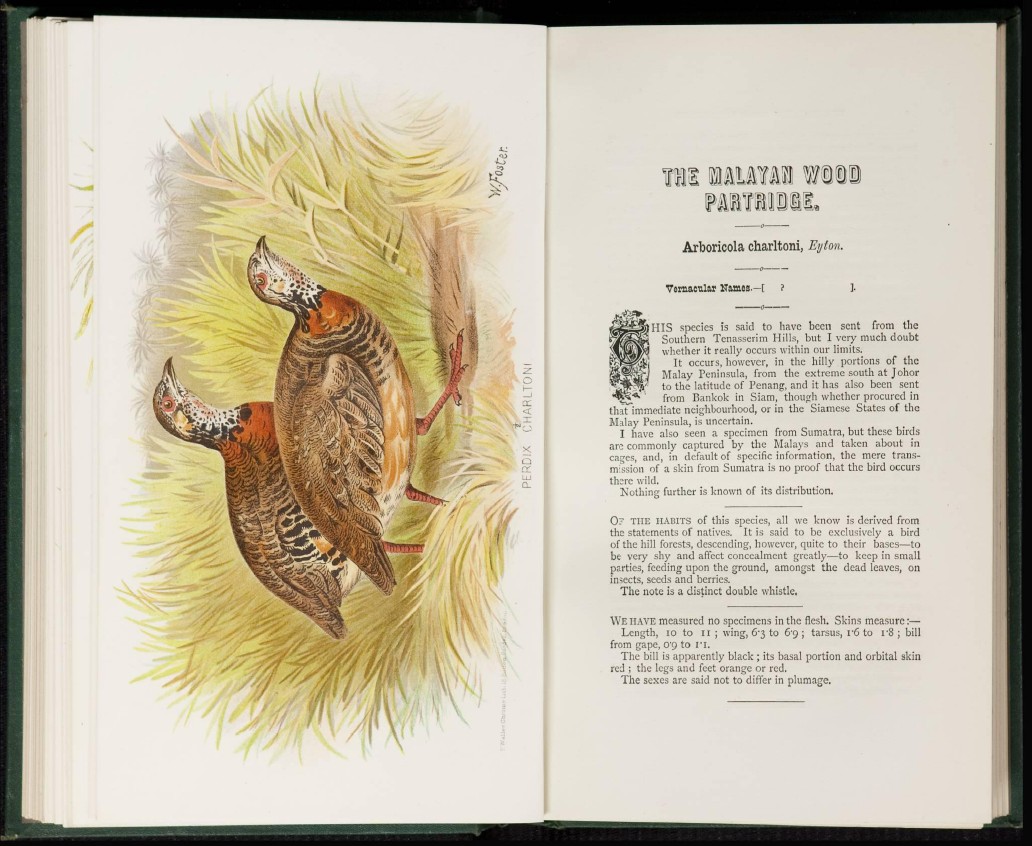
IUI iimiM mm
A r b o r i c o l a c h a r l t o n i , Eyton.
Vernacular Names.—[ ? ]•
jggJSaMpIIS species is said to have been sent from the
•jBw^grl -Southern Tenasserim Hills, but I very much doubt
s|MajyBi!J whether it really occurs within our limits.
rtjff^t o c c u r s > however, in the hilly portions of the
j l f 3 ? S C J Malay Peninsula, from the extreme south at Johor
j S j F T * to the latitude of Penang, and it has also been sent
" ' S J i * ' from Bankok in Siam, though whether procured in
that immediate neighbourhood, or in the Siamese States of the
Malay Peninsula, is uncertain.
I have also seen a specimen from Sumatra, but these birds
are commonly captured by the Malays and taken about in
cages, and, in default of specific information, the mere transmission
of a skin from Sumatra is no proof that the bird occurs
there wild.
Nothing further is known of its distribution.
OF THE HABITS of this species, all we know is derived from
the statements of natives. It is said to be exclusively a bird
of the hill forests, descending, however, quite to their bases—to
be very shy and affect concealment greatly—to keep in small
parties, feeding upon the ground, amongst the dead leaves, on
insects, seeds and berries.
The note is a disdnct double whistle.
WE HAVE measured no specimens in the flesh. Skins measure:—
Length, 10 to n ; wing, 6'3 to &g ; tarsus, v6 to i'8; bill
from gape, op to r i.
The bill is apparently black ; its basal portion and orbital skin
red ; the legs and feet orange or red.
The sexes are said not to differ in plumage,